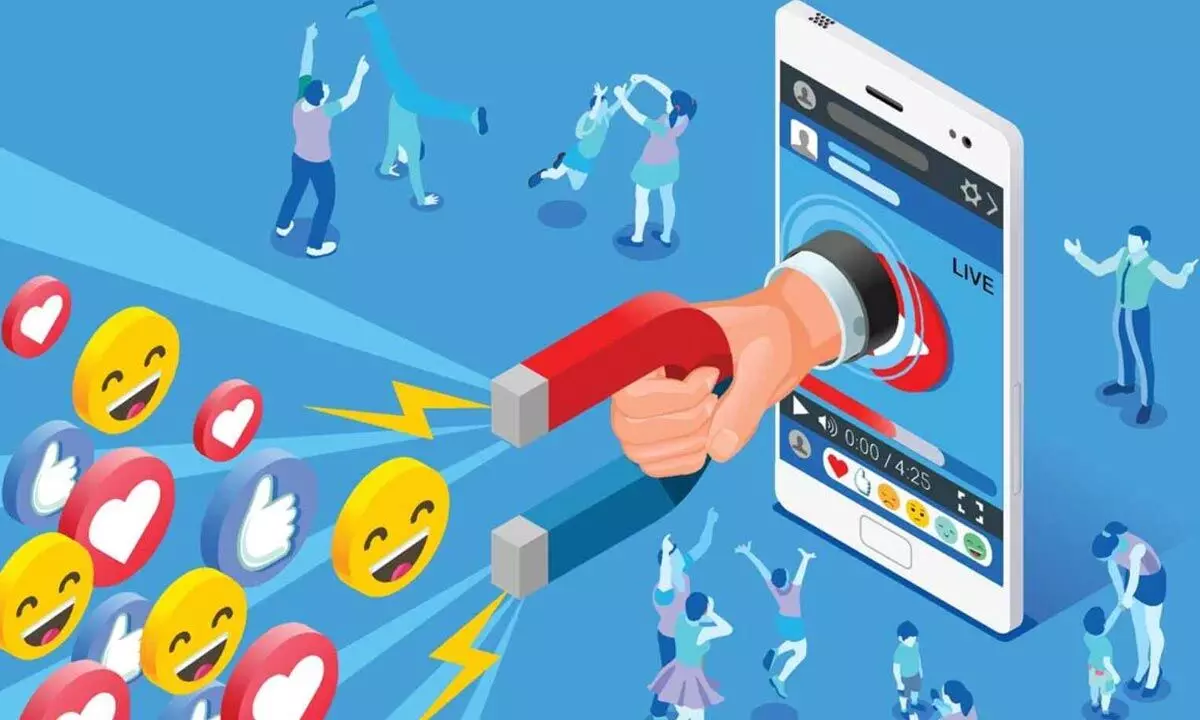Brands betting big on micro-influencers now
When brands activate product reviews and service recommendations at scale, nano-and micro-influencers can be a great way to target niche audiences and boost sales
image for illustrative purpose

- Marketers shifted their focus to nano, micro-influencer collaborations
- These content creators with 1k to 100k followers often have very engaged audiences
- Smaller influencers typically have a greater ability to connect with their community
Mumbai: Influencer marketing has become one of the most powerful marketing tools in 2023. Creator marketing can drive brand growth across the entire purchasing funnel, and many companies have leveraged online and offline influencer strategies over the last several years.
As consumers seek more relevant and authentic content from other people, marketers have shifted their focus to nano- and micro-influencer collaborations. These often-unpaid content creators with 1,000 to 100,000 followers have very engaged audiences.
Smaller influencers typically have a greater ability to connect with their community, which can give them significant influencing power.
Consumers in general are likely to trust them for their expertise, product reviews and service recommendations. When brands activate them at scale, nano- and micro-influencers can be a great way to target niche audiences, drive awareness and boost sales, experts say. Talking to Bizz Buzz, Yulia Aslamova, Head of Asia, DRIM Global, says: “Brands are increasingly shifting towards micro-influencers as a cost-effective way to achieve better RoI. Micro-influencers offer several advantages over traditional influencers or celebrity endorsements. They have smaller followings, are more affordable than macro-influencers or celebrities, and often have highly engaged audiences who trust their recommendations. Micro-influencers also tend to have niche audiences, making them advantageous for brands targeting specific demographics or niches.”
Additionally, micro-influencers are perceived as more authentic and relatable, which leads to higher levels of trust and brand loyalty. The shift towards using micro-influencers is driven by the desire for better return on investment (RoI), as they offer a cost-effective way to reach highly engaged, niche audiences that trust their recommendations. As a global performance marketing firm, we recognize the value of micro-influencers in helping brands achieve their marketing objectives and are committed to leveraging this trend for our clients’ benefit, she said.
Another key advantage of working with micro-influencers is their ability to drive faster growth for brands. It is because these influencers have a smaller, but highly engaged following. According to a survey, micro-influencers have higher engagement rates than macro-influencers, in the 7-20 per cent range. The content shared and generated by nano, and micro-influencers is often seen as more authentic and organic, leading to higher engagement rates and a more positive brand image.
Sumit Gupta, Founder, Viral Pitch, said: “Brands are realizing that micro-influencers can be highly effective for achieving better RoI due to their highly engaged and loyal followers. While celebrity influencers with millions of followers can certainly drive awareness and buzz, their massive following often means their audiences are diverse and not necessarily aligned with a particular brand or product. On the other hand, micro-influencers typically have smaller but highly targeted audiences who share similar interests and passions. This makes their followers more likely to engage with the influencer’s content, trust their recommendations, and ultimately take action to purchase products or services”.
Moreover, micro-influencers tend to be more affordable, allowing brands to engage with multiple influencers and reach a wider audience while staying within their marketing budgets. By partnering with micro-influencers, brands can effectively tap into niche communities, drive authentic engagement, and see tangible results that contribute to a better RoI, he said.
As consumers become increasingly savvy and mistrustful of traditional advertising, they turn to the recommendations of people they trust, such as micro-influencers, for product recommendations and advice.
Ishmeet Banga, Director and Head of Influence and talent business at Voxxy Media, says: “Micro-influencers tend to have smaller followings compared to macro-influencers or celebrities, which means that they usually charge less for sponsored content. This makes them a cost-effective option for brands, especially those with smaller budgets. Secondly, micro-influencers often have a more niche and engaged audience compared to larger influencers. They have a strong following within a specific interest or community, making it easier for brands to target their desired audience. This targeted approach can lead to better conversion rates and a higher return on investment for brands”.
Overall, using micro-influencers can be a smart strategy for brands looking to maximize their RoI and increase their reach in a cost-effective way. By partnering with micro-influencers, brands can tap into their engaged audiences, build trust with potential customers, and see a higher return on their investment.”
Micro-influencers offer several advantages over traditional influencers or celebrity endorsements. They have smaller followings, are more affordable than macro-influencers or celebrities, and often have highly engaged audiences who trust their recommendations
- Yulia Aslamova, Head of Asia, DRIM Global, tells Bizz Buzz

